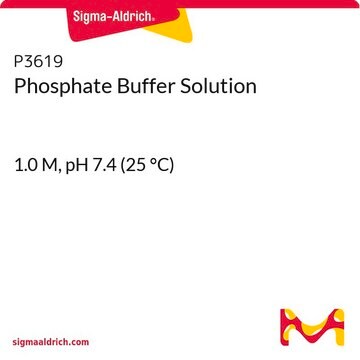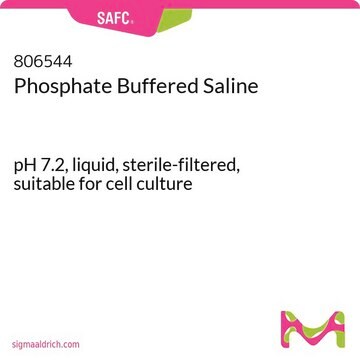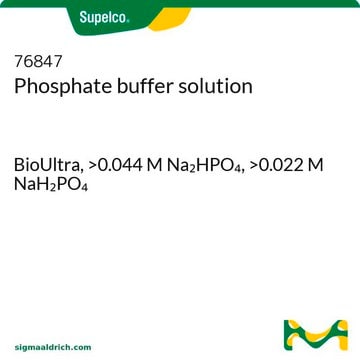P3288
Phosphate buffer pH 7.2 at 25 °C
for hematology and histology staining techniques
Synonym(s):
phosphate buffer
Sign Into View Organizational & Contract Pricing
All Photos(2)
About This Item
UNSPSC Code:
12352107
NACRES:
NA.47
Recommended Products
form
powder
color
white
pH
7.10-7.30
application(s)
hematology
histology
storage temp.
room temp
General description
Phosphate buffer is the most commonly used component of irrigation solution during surgeries, to preserve the living tissues. It is also used in immunochemical staining procedures. Phosphate buffer serves as an important fixative for light and electron microscopy. Its buffering capacity is pH sensitive and is preferred to be used at physiological pH (7.2-7.4).
Application
Intended for use as a buffer in various Romanowsky type staining procedures, including Wright Stain, Wright Giemsa, Giemsa, May Grunwald, Jenner and Leishman. Phosphate buffer pH 7.2 at 25 °C has been used in oocyte collection from porcine ovaries.
Reconstitution
Each vial will prepare 3.8 L of buffer, 8.3 mM.
Storage Class Code
11 - Combustible Solids
WGK
WGK 3
Flash Point(F)
Not applicable
Flash Point(C)
Not applicable
Certificates of Analysis (COA)
Search for Certificates of Analysis (COA) by entering the products Lot/Batch Number. Lot and Batch Numbers can be found on a product’s label following the words ‘Lot’ or ‘Batch’.
Already Own This Product?
Find documentation for the products that you have recently purchased in the Document Library.
Customers Also Viewed
Low concentrations of MEM vitamins during in vitro maturation of porcine oocytes improves subsequent parthenogenetic development
Naruse K, et al.
Theriogenology, 67(2), 407-412 (2007)
Biological Electron Microscopy: Theory, Techniques, and Troubleshooting (2011)
Thaise L Teixeira et al.
Microbial pathogenesis, 135, 103618-103618 (2019-07-17)
P21 is a protein secreted by Trypanosoma cruzi (T. cruzi). Previous studies have shown a spectrum of biological activities performed by P21 such as induction of phagocytosis, leukocyte chemotaxis and inhibition of angiogenesis. However, the activity of P21 in T.
Related Content
Learn about the clinical study of blood, blood-forming organs, and blood diseases including the treatment, prevention, and stains and dyes used in hematology testing.
Our team of scientists has experience in all areas of research including Life Science, Material Science, Chemical Synthesis, Chromatography, Analytical and many others.
Contact Technical Service










